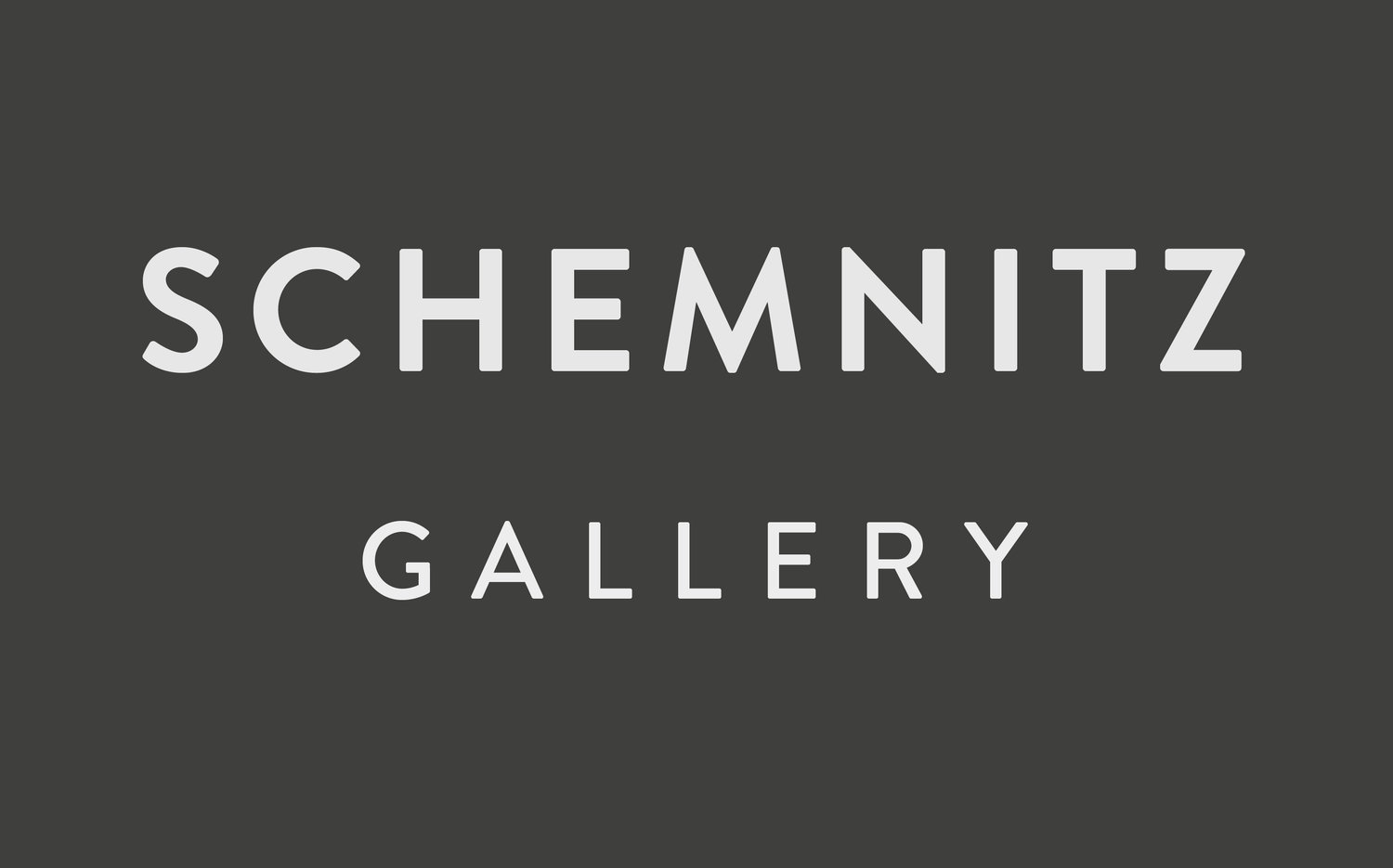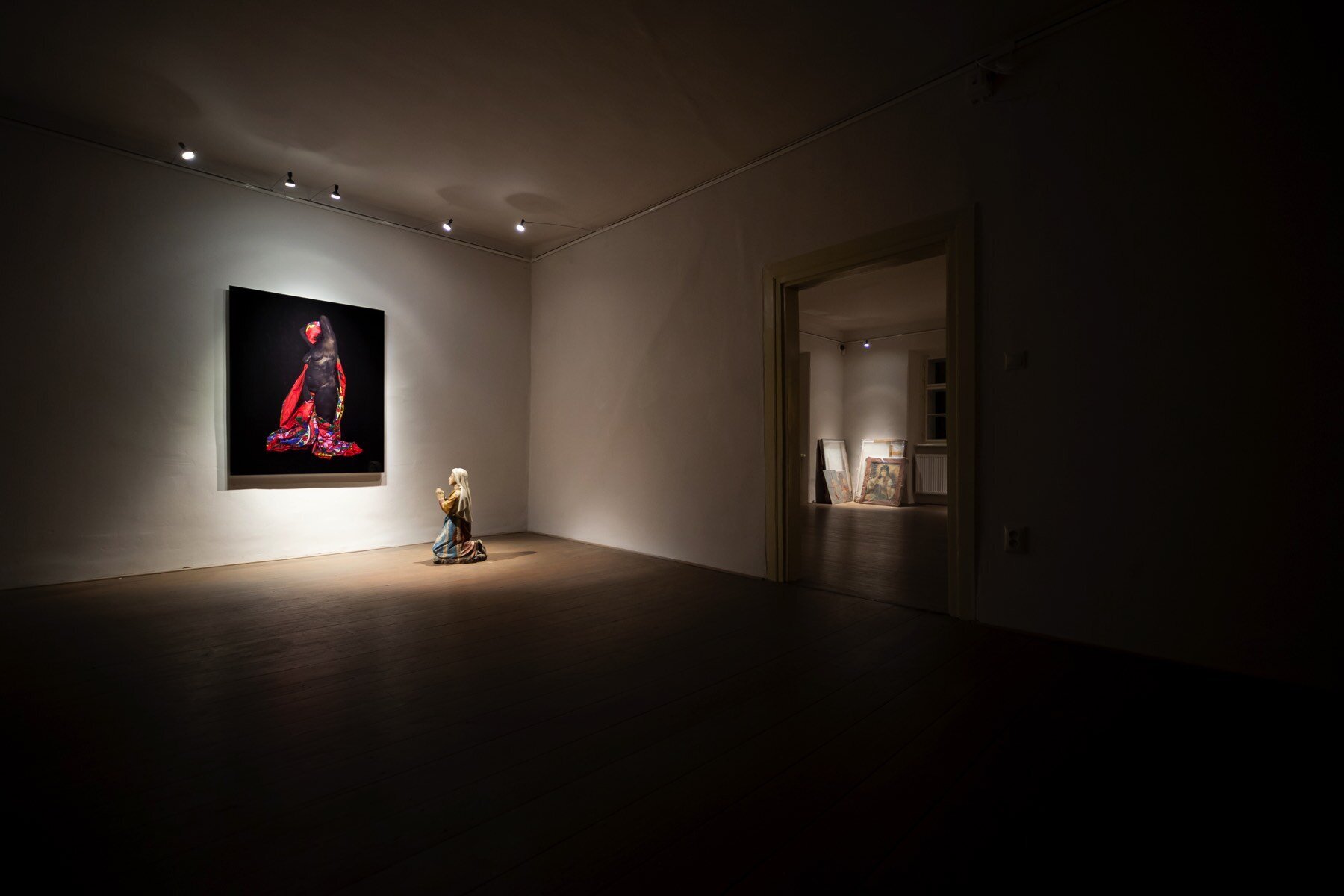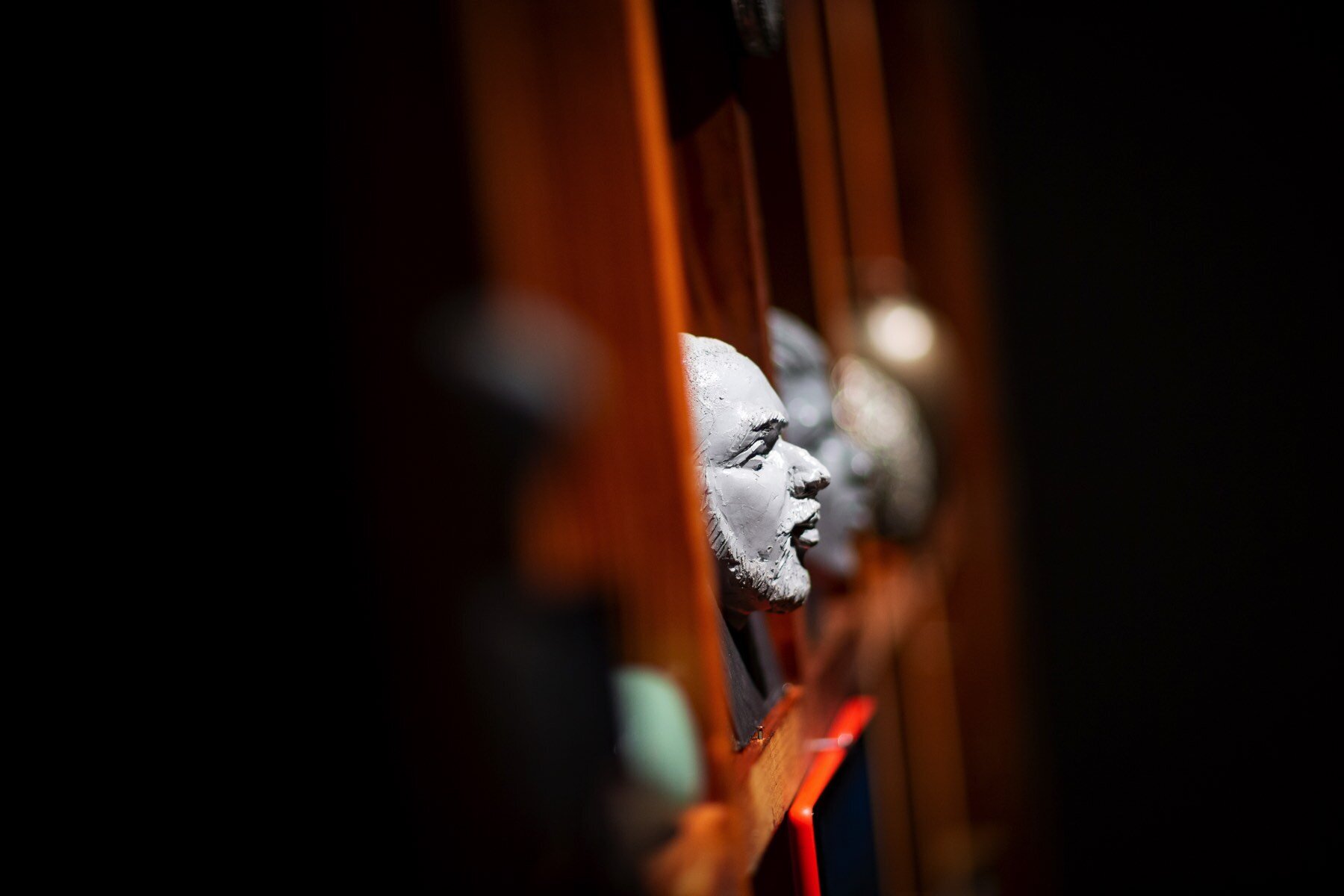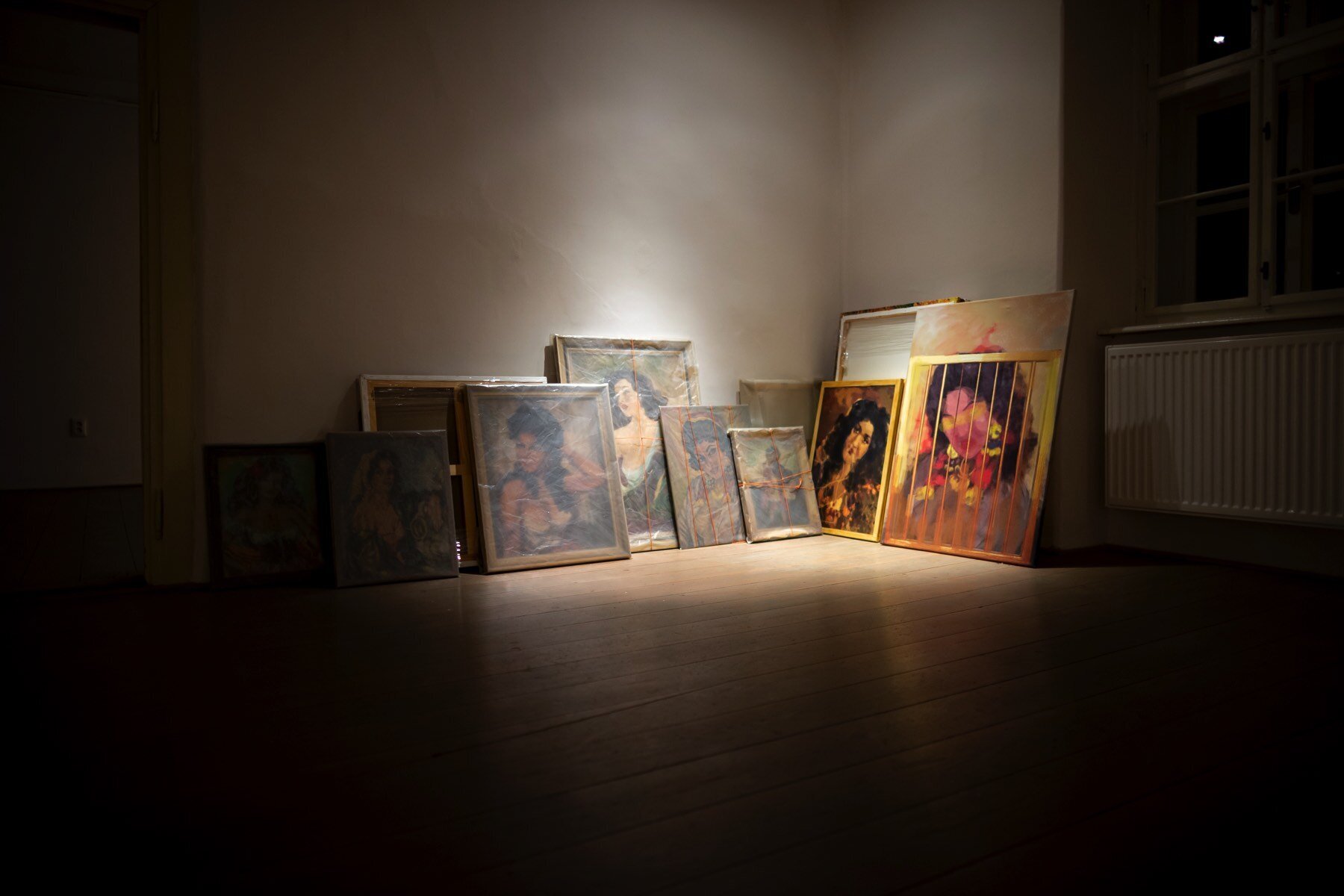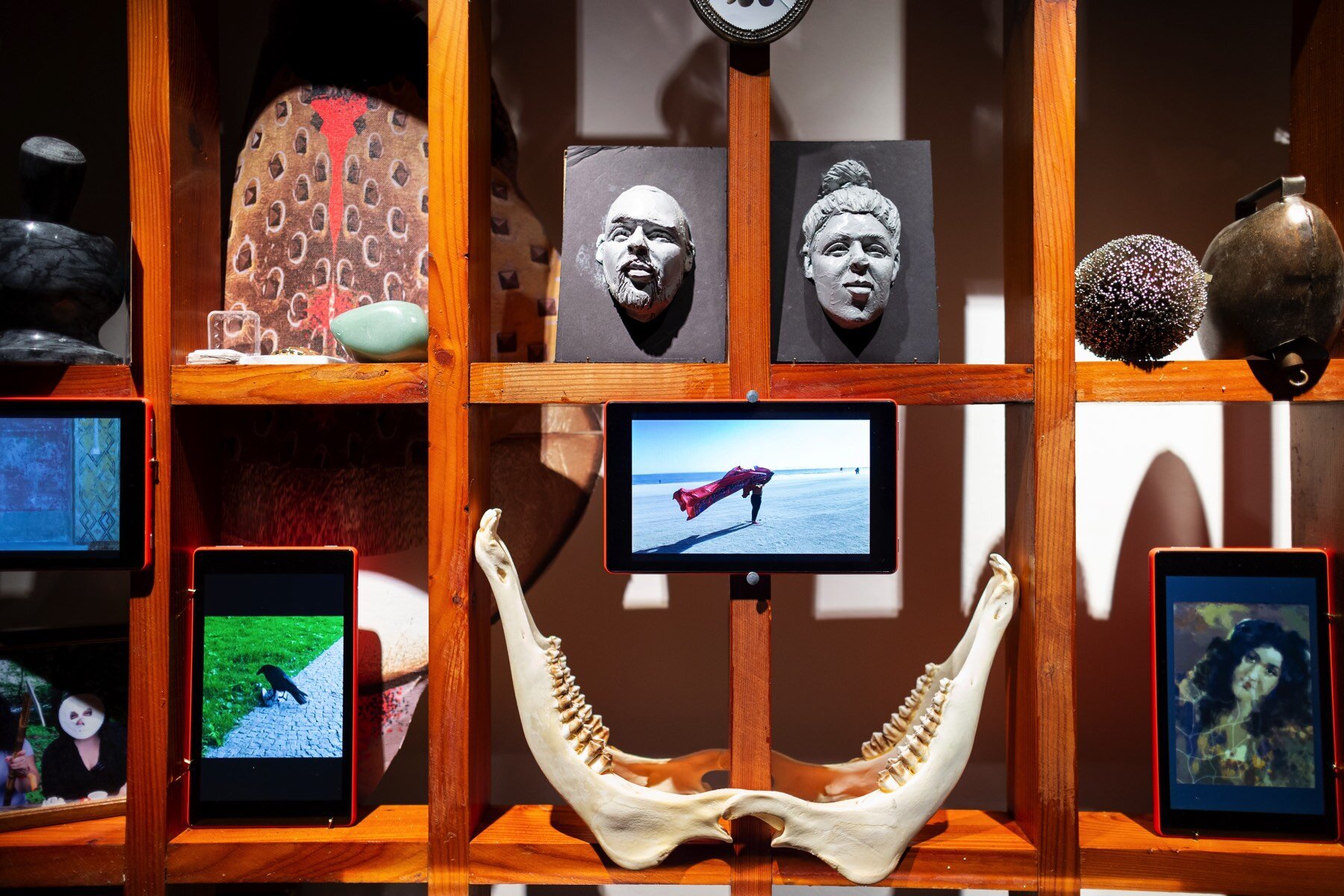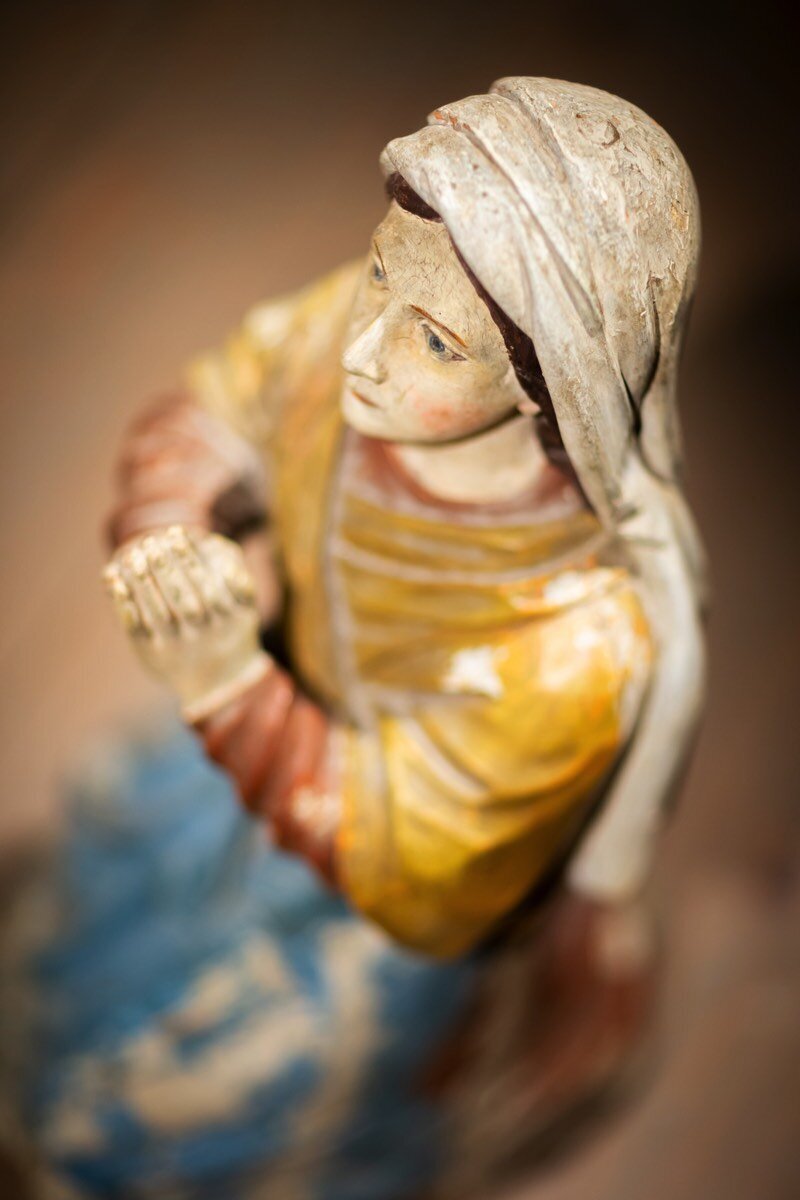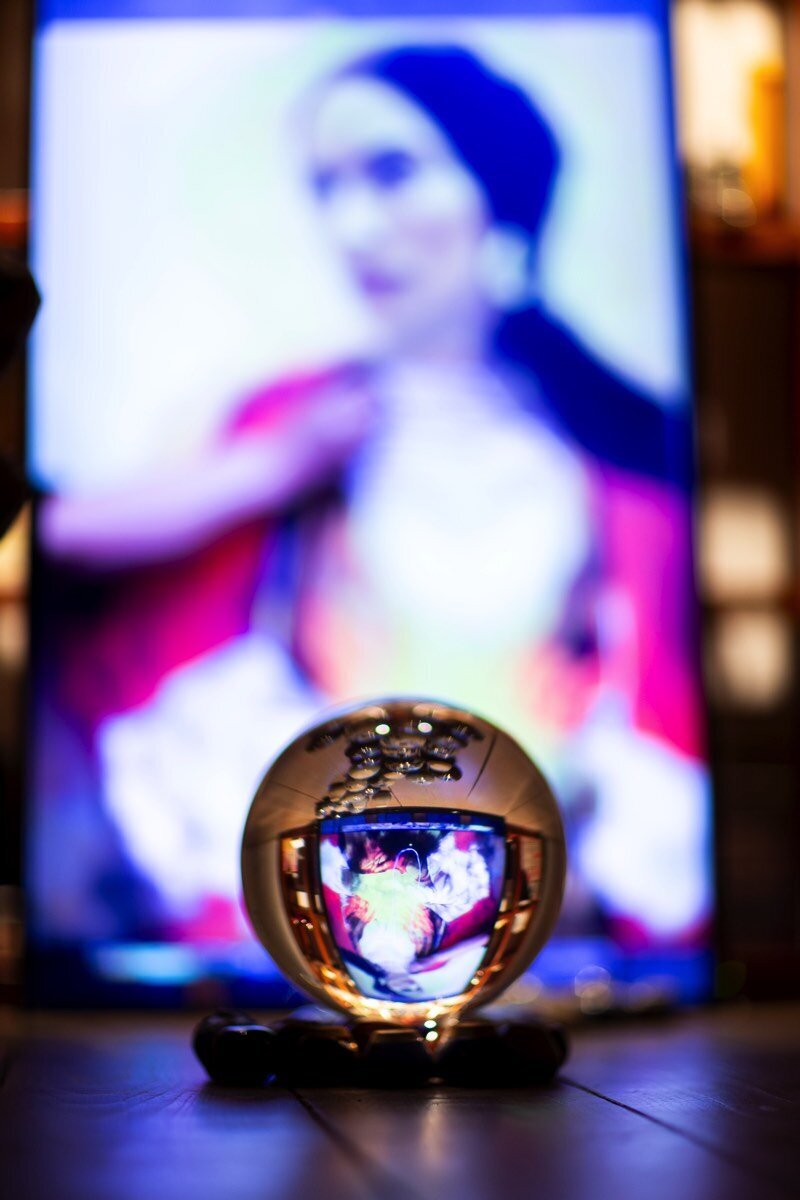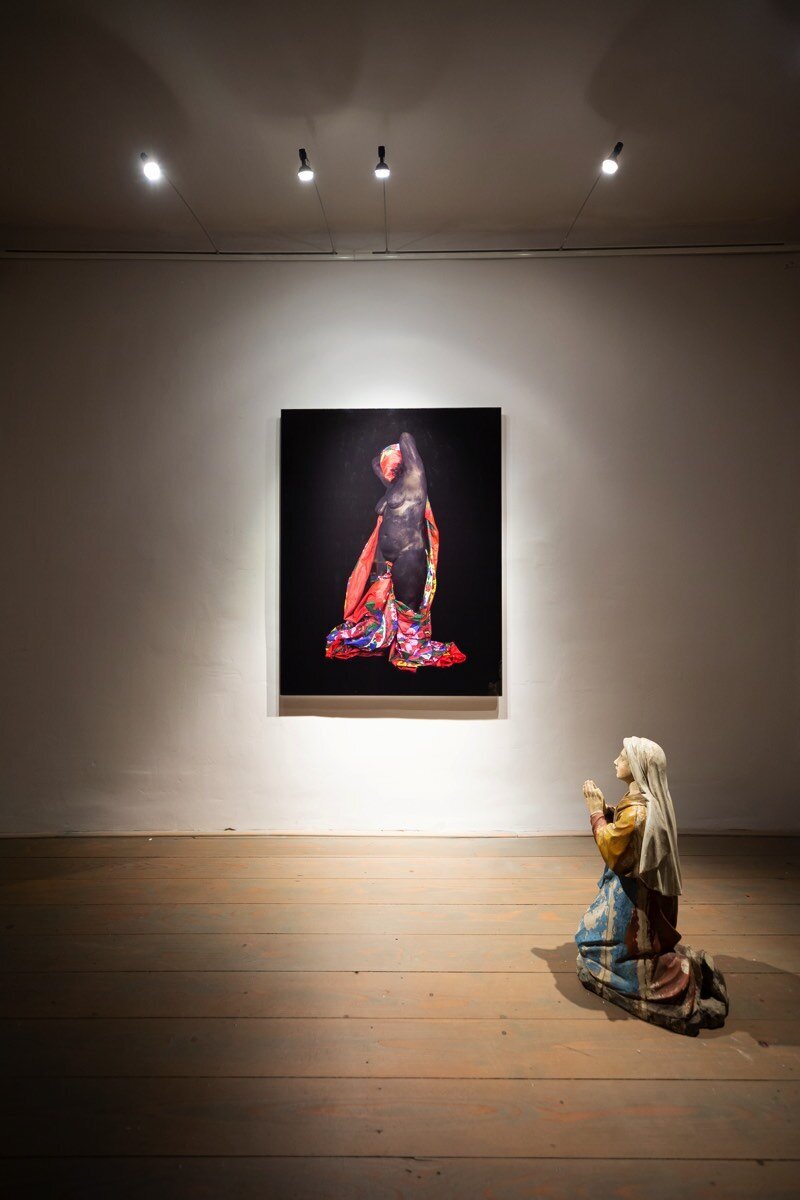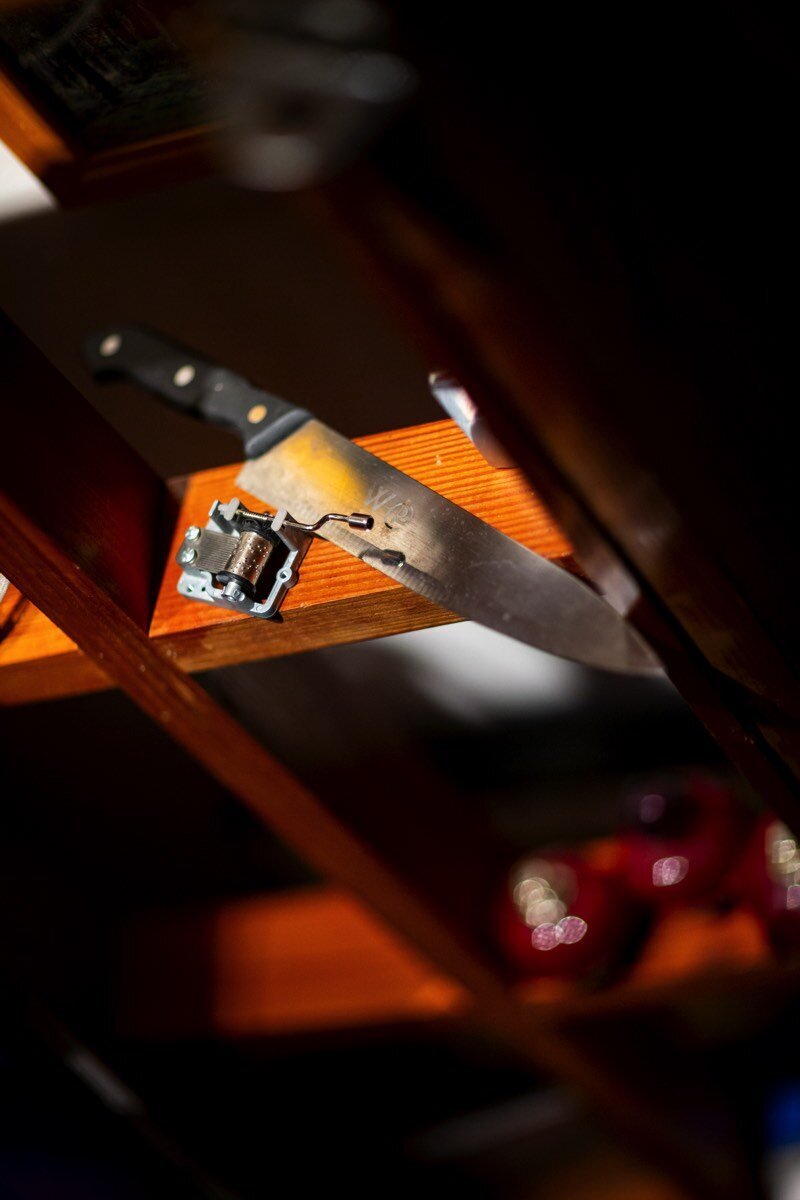Emília Rigová
Kala bale parno muj | Biela huba čierne vlasy
Kurátorka: Petra Hanáková
Vernisáž: 31. 10. 2020, 19:00 hod
Trvanie výstavy: 1. 11. – 30. 12. 2020
Inštalácia Emílie Rigovej, vymyslená na telo a priestorové dispozície Galérie Schemnitz, je esenciou toho, čo umelkyňu v posledných rokoch najviac zamestnáva: jej vlastná (rómska) identita. Čo to znamená pre ňu samu; čo to znamená na Slovensku; čo to znamená na scéne umenia i na trhu s umením? Celý tento problémový komplex by sa dal trochu ironicky označiť aj spojením Identity Trouble – trampoty s identitou.
Ale keďže Rigová je Rigová, je to sebakritická a navyše feministická umelkyňa, je pre ňu (a tým aj pre nás!) jej „kríza“ ideálnou príležitosťou k sebapoznaniu.
Svoju inštaláciu s názvom Kale bala parno muj (Biela huba, čierne vlasy) umelkyňa delí do troch celkov, troch prostredí s vlastnou (mediálnou) logikou i osobitou atmosférou. Každý priestor je síce jedinečným prostredím, spolu však tvoria jeden dostredivý koncept. Ten v istom zmysle, hoci je celkom novým dielom, v sebe zároveň nesie aj črty retrospektívy – autorského obzretia sa späť. Na seba samu i vlastnú tvorbu posledných rokov.
Absolventka Akadémie umení v Banskej Bystrici a jedna z posledných laureátok Ceny Oskára Čepana Emília Rigová (1980) je v pravom slova zmysle post-mediálnou umelkyňou. Pracuje v tom umeleckom médiu, ktoré jej v danej chvíli najviac vyhovuje. Tento dynamický pohyb naprieč médiami sprostredkuje aj výstava v Schemnitz Gallery. Ako svoje rómske alter ego Bari Raklori sa Emília najčastejšie vyjadruje maľbou – digitálne mastrovaným autoportrétom. V seba-inscenujúcich fotografiách či videách sa voči svojej romacite kriticky vymedzuje. Nie je to však rómstvo, ktorým nás každodenne saturujú médiá – rómstvo ako sociálna (a najnovšie už aj epidemiologická) hrozba. Na rozdiel od nerómskych umelcov/umelkýň, v ktorých tvorbe sa rómska téma najčastejšie viaže na chudobu, sociálne problémy a vylúčené komunity, hoc aj s úmyslom pomôcť im, Rigová si z pomyselného rómskeho balíčka vyberá iné, skôr pozitívne obrazy a hodnoty: bohatosť duchovnej a materiálovej tradície, synkretizmus náboženských predstáv, „neznáme“ dejiny... Emília Rigová si je vedomá svojej exotickej pozície na domácej výtvarnej scéne. Profit, ktorý z nej má, ju zároveň teší i konštruktívne znepokojuje. Nenechá sa „zavrieť do vitrínky“. Vzdoruje škatuľkám, respektíve: sama si ich – ako svoja vlastná kurátorka – príležitostne otvára, a sa v nich – v rámci svojich situačných identít – neustále preskupuje.
ARTIST: EMÍLIA RIGOVÁ
KALE BALA PARNO MUJ | WHITE MOUTH BLACK HAIR
Curator: Petra Hanáková
Non-public opening of exhibition: 31 Oct 2020, 7 pm
Duration of exhibition: 1 Nov – 30 Dec 2020
Emília Rigová (1980), graduate of the Art Academy in Banská Bystrica and one of the recent laureates of the Oskár Čepan Prize, is, in the true sense of the word, a po-media artist. She works with media she finds the most suitable at the moment. Such a dynamic movement across media is offered by the exhibition in Schemnitz Gallery, too.
As her Roma alter ego, Bari Raklori, Emília expresses herself mostly through painting – digitally mastered self-portrait. In self-staged photographs or videos, she positions herself critically toward her Roma origin. However, the Roma world she presents is not the one with which we are flooded by the media on a daily basis – the Roma world as a social (and nowadays also epidemiological) danger. Unlike non-Roma artists who, although with an intention to help, mostly present Roma related topics as bound to poverty, social problems and excluded communities, Rigová prefers to select positive images and values from the imaginary Roma package: richness of the spiritual and material traditions, syncretism of religious notions, “unknown” history… Emília Rigová is aware of her exotic position on the domestic art scene. The profit she has from this position makes her both pleased and constructively disturbed. She does not permit herself to be “locked up in a showcase”. She resists boxes; or, as her own curator, she occasionally opens them and – reflecting her situational identities – “regroups” herself within the boxes. Emília Rigová’s installation, tailor-made to the spatial dispositions of Schemnitz Gallery, is an essence of what the artist has been occupied with over the last few years: her own (Roma) identity. What does it mean to her; what does it mean in Slovakia; what does it mean on the art scene and art market? This complex issue could be labelled, somewhat ironically, with the collocation Identity Trouble. But, since Rigová is Rigová, a self-critical and, moreover, feminist artist, her “crisis” is an ideal opportunity for her (and thus for us too!) to seek self-knowledge.
Emília (Milka) has divided her installation, entitled Kale bala parno muj (White mouth, black hair), into three units, three environments, each having both its own (media) logic and unique atmosphere. Each space is a unique environment, but together they form one centripetal concept. Although being a completely new work, the concept, in a certain sense, bears signs of retrospectivity – the artist’s looking back at herself and her artwork of the last few years. Map of the artworks: oltáRIG (From “oltárik” - “small altar”) In its nature, the first room is the “densest”; it is rather like a museum or chamber of curiosities of Emília Rigová – of her identity, or perhaps even a “Rigová institute”. However, some other concepts of expanded imagery or emotion-charged image fields could be applicable here: the Warburg’s Bilderatlas, mood walls in teenagers’ bedrooms, Pinterest walls, or detectives’ pinup boards, so common in recent crime stories and which, symptomatic of current times, the art historian W. J. T. Mitchell enjoys studying so much. Simply put, what we see here is Emília’s, Milka’s, compacted image-semantic world – what she likes, what likes her: presents from friends, fetishes, souvenirs and talismans, voodoo (?), but also miniatures, fragments or relics of her own artworks, for example, a unique video-anthology… this all laid out, for both the view from a distance and the camera lens, into a certain (mental?) grid of a large set of shelves. In fact, the installation is a self-portrait. On the one hand a very intimate one, on the other a strictly edited one. Rigová has always been strong in (self)staging, and this altar of her identity confirms that. It is an invitation to the adventure of reading, or even to a certain kind of “interpretive cannibalism”. GODDESS/IDOL The second room is considerably more minimalistic. It is hard to comprehend what is happening here, one of the reasons being that, in arranging two art objects, Rigová purposefully stretches the arch of ambivalence to make it as large as possible. Stretches and/but zooms it in! A naked self-portrait is hanging on the wall. Not Roma enough, the artist coloured herself more black and wrapped part of her body in an ethno-scarf; so, clearly, she has self-colonised herself. At the same time: it is not an ideal body. In spite of that, it presents itself with confidence. In other words, it is a feminist self-portrait. In front of this nude (a quasi-idol or pagan Goddess), a sculpture of a praying young woman is installed (perhaps Bernadette from a scattered Lourdes sculpture). This woman-woman relationship is clearly blasphemous, with an intention – I suppose – to induce (and perhaps to ironize, too) the reputed unconventionality of Roma religious notions. However, definitely more readings are invited here… DEPO/AUCTION The last part of the exhibition reminds us of a depository room (a kind of private museum of Roma imagery), a storage, a “consignment” room… anyway, a background space of an institution that “consorts” with pictures. The artist, I suppose, uses the medium of installation to evoke a sense of fatigue with both artistic operation and self-operation, as she has perceived and experienced it in the last few years. It is perhaps a vanitas – an account of the vanity and velocity of pictures’ circulation, of their interchangeability. Or, is it an ecological (?), a bit of a Covid, challenge to slow down our activity and “flatten the curve” of the art performance acceleration. A bit of morality for self-reflection here.
